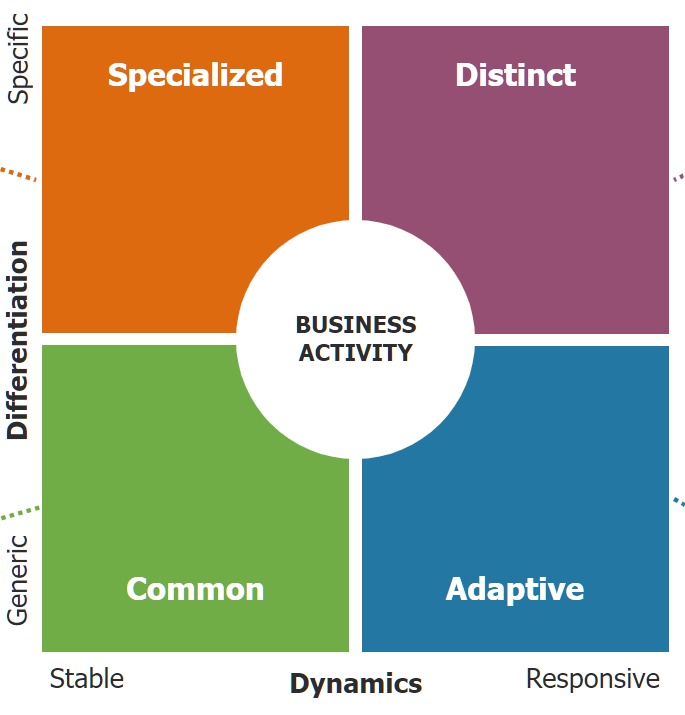A digital landscape that makes you smile
Forced to work from home when COVID started, I structured my desk optimally: clean, tidy, ergonomic, and everything I needed within reach. Although my work has not really changed in the past two years, my desk has become crammed and cluttered again. With digital IT landscapes, if you’re not careful, the same thing can happen.
Japanese tidying guru Marie Kondo has described a way to keep your home clean. Her theory is called “tokimeku”, which means that you only keep things that bring you joy. Translated to a digital IT landscape, this becomes “decide which parts of the system landscape make you cheerful”. Knowing this, take action and clean up and continue doing so. Anderson MacGyver has a few tools to help you determine what excites you. What should remain ‘on the desk’ of your digital IT landscape, and what can be cleaned up?
Cleaning up your digital IT landscape using business activities
It starts with identifying the activities that are the right of existence of an organization. To do so I use the Multimodal Business Activity Analysis. Subsequent business activities are sorted among four coloured quadrants -green, blue, orange and purple- in order to analyse if technology investments are in balance and where investments should be made. For example, to ‘keep the desk clean and workable’ I need to decide where new capacities must be defined and where technology enables new products and services compared to technology upgrades forced by solution providers.
The translation to technology investments is not a mathematical exercise. There are multiple trajectories to embark. For example, as an energy company, do you choose to be a commodity supplier and go for operational excellence? Or do you deploy advanced technology to support customers as best as possible in their energy transition and go for customer intimacy? The product and the sector remain the same, but the chosen strategy has a major impact on the organisation of business and behind of IT.

No single solution for everything
Many of our customers have historically used an ERP or similar core system. Originally rolled out as a ‘solution for everything’, but increasingly modified and supplemented over the years. In other words, the desk has become fuller and messier again. It lacks overview, which makes it more difficult to operate in a customer- and value-oriented way.
What to do?
Aim for a digital IT landscape in which you give the core sufficient attention, but in which you look at the whole, with related solutions for each business domain. No monolithic ERP that (with or without the necessary customisation) supports everyone’s job, but an adequate and coherent holistic solution that provides optimum support within the individual domains. This may well be a single core application, surrounded by collaborating systems – like the laptop on my desk communicating with my other apps and devices.
Creating value
My work at Anderson MacGyver is about supporting organisations and their leaders in their strategic, operational, and tactical choices. The better and more focused those choices are, the more value is created. That makes me enthusiastic and that is what my workplace should be optimally equipped for. If necessary, with the help of Marie Kondo.

 Your digital ambitions
Your digital ambitions  Your digital ambitions
Your digital ambitions